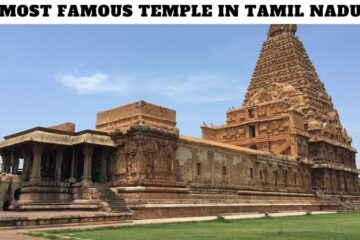
Dakshineswar Kali Temple is a Hindu navaratna temple in Dakshineswar, Kolkata, West Bengal, India. Situated on the eastern bank of the Hooghly River, the presiding deity of the temple is Bhavatarini (Kali), a form of Mahadevi or Parashakti Adya Kali, otherwise known as Adishakti Kalika. The temple was built in 1855 by Rani Rashmoni, a Zamindar, philanthropist and a devotee of Kali Maa. The temple is known for its association with Ramakrishna and Ma Sarada Devi, mystics of 19th century Bengal.
The temple complex is spread over an area of 25 acres and has 12 shrines. The main temple is a three-storeyed structure with nine spires. The sanctum sanctorum of the temple houses an idol of goddess Kali, famously known as Bhavatarini, standing on the chest of Lord Shiva, who rests in a lying posture. The other shrines in the complex are dedicated to Radha-Krishna, Shiva, Rama, Hanuman, and other deities.
Dakshineswar Kali Temple Timing
Dakshineswar Kali Temple Location
Dakshineswar, Kolkata, West Bengal 700076
More Information About Dakshineshwar Temple
- Temple(s): 1 main temple of Kali; 12 Shiva temples; 1 temple of Radha–Krishna
- District: North 24 Parganas
- Floors: 3
- Function: Temple
- Style: Navaratna
- Festivals: Kali Puja, Durga Puja, Snana Yatra, Kalpataru Day
- Deity: Sri Jagadishvari Bhavatarini Kalimata Thakurani
- Geographic Coordinates: 22°39′18″N 88°21′28″E / 22.65500°N 88.35778°E

History of Dakshineswar Kali Temple, Kolkata, West Bengal
The Dakshineswar Kali Temple in Kolkata, West Bengal, has a rich history dating back to the mid-19th century. The temple was built by Rani Rashmoni, a prominent philanthropist and devotee of Goddess Kali, during the period of 1847 to 1855.
Founding and Significance
- Rani Rashmoni’s Dream: The temple’s origin story revolves around Rani Rashmoni, a devout Hindu and philanthropist. According to tradition, she dreamt of Kali asking her to build a temple instead of embarking on a pilgrimage to Varanasi. This divine encounter led to the temple’s construction in 1855.
- Architectural Symbolism: The majestic nine-spired navaratna structure reflects traditional Bengali temple architecture. Each spire signifies different cosmic elements, symbolizing spiritual ascension and enlightenment.
- Religious Significance: Dedicated to Bhavatarini, a fierce yet benevolent form of Kali, the temple became a pilgrimage site for Hindus across India. The presence of other shrines within the complex reflects inclusivity and the worship of diverse deities.
Association with Ramakrishna and Sarada Devi
- Ramakrishna’s Spiritual Journey: In 1866, a young priest named Ramakrishna Paramahamsa arrived, becoming the temple’s chief priest. His deep devotion to Kali, diverse spiritual practices, and unique teachings attracted devotees and disciples, transforming Dakshineswar into a vibrant spiritual center.
- Sarada Devi’s Presence: Ramakrishna’s wife, Sarada Devi, also resided at the temple, playing a crucial role in its life. She was revered for her wisdom, compassion, and embodiment of traditional Hindu ideals.
- Global Influence: Through Ramakrishna’s teachings and the Ramakrishna Mission, the temple’s influence transcended regional boundaries, impacting religious discourses and social reforms across the globe.
Beyond Religious Significance
- Social Upliftment: Rani Rashmoni’s philanthropy extended beyond temple construction. She built roads, hospitals, and other public amenities, contributing to the social development of the region.
- Cultural Hub: The temple has become a cultural landmark, attracting diverse artistic expressions like music, dance, and literature. Renowned artists and thinkers have been associated with the temple, highlighting its cultural significance.
- Contemporary Relevance: Today, the temple continues to be a center of religious devotion, spiritual exploration, and social service. It serves as a testament to India’s rich cultural heritage and the enduring legacy of its founders and religious figures.
Dakshineswar Kali Temple Architecture
- Type: Bengal architecture
- Style: Navaratna
- Founder: Rani Rashmoni
- Completed: 31 May 1855; 168 years ago
- Temple(s): 1 main temple of Kali, 12 Shiva temples, 1 temple of Radha–Krishna
The Dakshineswar Kali Temple is a stunning example of the Navaratna style of Bengali temple architecture. The temple is built on a high platform with a flight of stairs leading up to the entrance. The main temple is a three-storeyed structure with nine spires. The sanctum sanctorum of the temple houses an idol of goddess Kali, famously known as Bhavatarini, standing on the chest of Lord Shiva, who rests in a lying posture. The other shrines in the complex are dedicated to Radha-Krishna, Shiva, Rama, Hanuman, and other deities.
Here are some of the key architectural features of the Dakshineswar Kali Temple:
- Nine Spires: The nine spires of the temple represent the nine planets in the Hindu astrological system.
- Curved Roof: The curved roof of the temple is a typical feature of Bengali architecture.
- Terracotta Decorations: The temple is decorated with intricate terracotta panels depicting scenes from Hindu mythology.
- Sculptures: The temple is adorned with numerous sculptures of gods and goddesses, as well as mythical creatures.
- Gardens: The temple complex is surrounded by beautiful gardens, which provide a peaceful and serene setting for worship.
Interesting Facts About Dakshineswar Kali Temple Kolkata
- The temple was built by Rani Rashmoni, a wealthy zamindar, in the 1850s.
- The temple is dedicated to the goddess Kali, who is one of the most popular Hindu deities.
- The temple complex is spread over an area of 25 acres and has 12 shrines.
- The main temple is a three-storeyed structure with nine spires.
- The sanctum sanctorum of the temple houses an idol of goddess Kali, famously known as Bhavatarini, standing on the chest of Lord Shiva, who rests in a lying posture.
- The other shrines in the complex are dedicated to Radha-Krishna, Shiva, Rama, Hanuman, and other deities.
- The Dakshineswar Kali Temple is one of the most popular tourist destinations in Kolkata.
- It is visited by millions of devotees every year.
- The temple is open from 6:00 am to 12:30 pm and from 3:30 pm to 8:30 pm.
How To Reach Dakshineswar Kali Temple Kolkata
The Dakshineswar Kali Temple, a majestic landmark dedicated to Goddess Kali, attracts devotees and tourists alike. Here’s how you can reach this spiritual haven:
By Train: Take a local train from Sealdah station towards Dankuni. Get off at Dakshineswar station, which is a short walk from the temple.
By Metro: Take the Kolkata Metro from any station to the Shyambazar station. From there, take an auto rickshaw or shared taxi to the temple. The distance is approximately 4 kilometers.
By Bus: Several buses ply from different parts of Kolkata to Dakshineswar. Some popular routes include:
- Esplanade to Dakshineswar (Route 158)
- Howrah Station to Dakshineswar (Route 43C)
- Barrackpore to Dakshineswar (Route 40)
By Ferry: Take a ferry from Prinsep Ghat or Howrah station to Baranagar. From there, take an auto rickshaw or shared taxi to the temple. This option offers scenic river views but might take longer depending on ferry timings.
By Car: If you’re driving, take Acharya Jagadish Chandra Bose Road from Kolkata. It leads directly to the temple, with ample parking available near the entrance.


